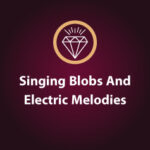Machine learning has helped shape just about every aspect of our digital lives, whether it’s deciding which Netflix show or YouTube video to recommend to us or even teaching cars to drive themselves. One of the most innovative uses for machine learning, however, is in creating music. Just recently Google released Blob Opera, a machine […]
calm vocal
Interview with Vocal Coach for Singers & Speakers, Julia Langley – Part 2
In the first part of my interview with Julia Langley, we discussed everything from how she’s transformed her career with life changing events to a few quick exercises that are great for helping singers and speakers to visualizing sound. I can’t wait for you to jump into this second part of our interview to hear […]
